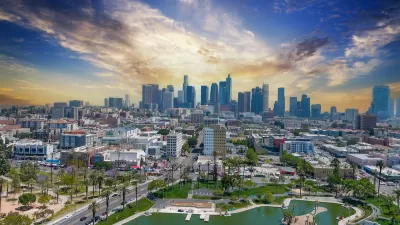Transnational communities transcend borders in order to act collectively, despite geographic, economic and political challenges. A new paper examines how community-based planning is scaled up and embedded in transnational processes and relationships.
Approximately 11 million undocumented immigrants are impacted by Congress’ failure in pushing forward sensible and comprehensive immigration reform. This number doesn’t include family members of undocumented people who have legal status but are nevertheless affected. In this terribly slow—already late—policy process, advocacy organizations are asking President Obama to at least place a moratorium on deportations and expand the deferred action or temporary protective status.
While immigration reform at the national scale shows little progress, if any, local policies appear to be advancing at a significantly faster pace. We have seen progress in dismantling ICE collaborations with city police departments. We have seen changes in policy around checkpoints. We have witnessed deferred action for undocumented students, and most recently, seen licenses for undocumented immigrants in certain states.
These wins address some of the everyday hardships of undocumented immigrant communities, such as driving to work without a driver’s license and police harassment and discrimination. But as planners and policy makers we have learned that the conditions of immigrants in the US are also interconnected to the conditions in their home countries. In a world of global cities and capital, communities increasingly represent transnational relations and interdependent realities—one thing that all these immigration policies and policy makers fail to consider.
Transnational communities and projects provide us with governing processes that bring together the realities of communities living across distinct political borders. While national immigrant policies drastically fail to meet the needs of immigrant communities or the conditions that produce international migration, these communities often rely on their own alternative forms of governance that respond to their needs as a community on both sides of the border.
How communities extend across borders and at the same time create structures of governance and social reproduction reframes some of the theories that planners use around citizenship, community development and participation. With their own distinct challenges, forms of transnational governance and community development in Oaxaca and California for example, provide a type of citizenship that is linked to high rates of participation. Meanwhile urban planners in the US continually struggle to find ways to substantively involve immigrant communities in planning processes. In addition, when planners think of community-based planning we often think of local decisions and groups that act collectively to impact local planning projects. Transnational communities on the other hand challenge tenets of both locality and community, and help us understand what sustains a community even in the face of significant political and physical barriers. Planning and policy take place at distinct scales, and these communities negotiate these scales to continue to provide services, develop planning projects, and reproduce their own values, norms and customs.
If not alternative governance models, these community-based examples at least expand the possibilities of developing policies and planning projects that recognize the interdependency of our global communities.
Sarmiento, Carolina S., and Victoria A. Beard. "Traversing the Border Community-Based Planning and Transnational Migrants." Journal of Planning Education and Research 33, no. 3 (2013): 336-347.
Summary by Carolina S. Sarmiento
SAGE and ACSP have kindly granted access to the full article until 12/25/2013

Alabama: Trump Terminates Settlements for Black Communities Harmed By Raw Sewage
Trump deemed the landmark civil rights agreement “illegal DEI and environmental justice policy.”

Study: Maui’s Plan to Convert Vacation Rentals to Long-Term Housing Could Cause Nearly $1 Billion Economic Loss
The plan would reduce visitor accommodation by 25% resulting in 1,900 jobs lost.

Planetizen Federal Action Tracker
A weekly monitor of how Trump’s orders and actions are impacting planners and planning in America.

Waymo Gets Permission to Map SF’s Market Street
If allowed to operate on the traffic-restricted street, Waymo’s autonomous taxis would have a leg up over ride-hailing competitors — and counter the city’s efforts to grow bike and pedestrian on the thoroughfare.

Parklet Symposium Highlights the Success of Shared Spaces
Parklets got a boost during the Covid-19 pandemic, when the concept was translated to outdoor dining programs that offered restaurants a lifeline during the shutdown.

Federal Homelessness Agency Places Entire Staff on Leave
The U.S. Interagency Council on Homelessness is the only federal agency dedicated to preventing and ending homelessness.
Urban Design for Planners 1: Software Tools
This six-course series explores essential urban design concepts using open source software and equips planners with the tools they need to participate fully in the urban design process.
Planning for Universal Design
Learn the tools for implementing Universal Design in planning regulations.
Caltrans
Smith Gee Studio
Institute for Housing and Urban Development Studies (IHS)
City of Grandview
Harvard GSD Executive Education
Toledo-Lucas County Plan Commissions
Salt Lake City
NYU Wagner Graduate School of Public Service






























